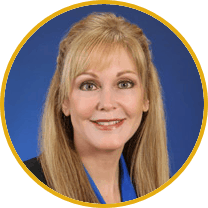Some operational and administrative requirements are relatively similar across PAC settings. Exploring similarities flushes out what is presently aligned for the model to work, and identifies where there are gaps that need more oversight or policy changes.
Similar Purposes and Responsibilities Among PAC Providers
Discussions explored the similar purposes and responsibilities of the four providers as it is today.
1. Similar purposes or responsibilities:
- Leadership/responsible body
- Patient rights
- Quality assurance
- Compliance with federal/state/local laws
- Infection control
- Licensure of clinical staff
- Adequate staff
- Emergency preparedness
2. Requirements for institutional PAC setting:
- Physical plant/facilities
- Pharmacy
- Dietary services
- Lab services
What Does it Take to Align PAC Providers?
How can all post-acute providers align? There are four main requirements, and tiers based on level of care. Here’s how it could work.
Four Approaches to Align Requirements for PAC Providers
- Categories and requirements should be defined by patient needs; reflect the full range of beneficiaries’ PAC needs.
- Common set of requirements that apply to all providers.
- Separate categories for institutional and home health PAC providers.
- New approach could establish general and specialized PAC requirements (tiers).
How Would the Tiers Work?
MedPAC is recommending two tier levels based on general and specialized PAC requirements. Tier 1 would be the place the majority of patients would be cared for. Tier 2 is for specialized care.
Tier 1 – Inclusions of Requirements (Majority of Patients)
- Establish common requirements for institutional and home health PAC providers that treat typical patients.
- Includes general requirements for institutional PAC providers (facilities, dietary services, pharmacy, labs).
Tier 1 – Clinical and Staffing Requirements
• Clinical supervision/nursing requirements vary the most across settings:
– Frequency/intensity of service varies the most.
– Definition/licensure similar
Tier 1 – Policy Considerations Across the Four PAC Settings
For Tier 1 to work, new policy would be considered. In today’s environment, there are different requirements in each setting. For example, in skilled nursing, inpatient rehabilitation facilities and long-term care hospitals, there is a physician medical director required, but not in home health agencies. Physician supervision during a PAC stay differ from setting to setting. Policy considerations:
- Should the program require 24-hour RN coverage?
- Require all PAC providers to have a physician/medical director?
- Frequency of physician involvement during PAC stay?
“According to Evan Christman, a senior analyst who presented this proposal to the commission, it may be better to qualify payments based on patient characteristics rather than site of care to “reflect the full range of beneficiaries’ PAC needs.”
Tier 2 – Specialized Requirements: Patients with the Highest Care Needs
- Condition-specific requirements for providers to treat categories of patients with highly specialized care need. For example: ventilator or respiratory care, high-need patients (prior ICY stay), medially complex patients (infectious disease, cancer, dialysis).
- Each category would address staffing and services necessary for a condition.
- Medicare could establish and update categories as clinical needs and provider capabilities change.
What Policies Can Ensure Appropriate PAC Use In A Unified Payment System?
1. Maintain homebound requirement for home healthcare.
2. Require a three-day stay for PAC to ensure appropriate use.
- However, not a requirement for HHAs, IRFs and LTCHs currently.
- Alternative to mitigate effect of three-day hospital stay requirement:
- Permit observation days to count towards requirement.
- Allow ACOs or entities at financial risk to waive requirement.
Key Policy Issues for Developing New Requirements for PAC
1. What requirements should be common to PAC providers? (Tier 1).
- Level of nursing
- Physical involvement
2. What groups or service should be identified for specialized care ?(Tier 2).
3. Ensuring appropriate use – application of three-day stay requirement.
4. Implementation timeline for new requirements.
Remington’s Takeaway
- Steps are being taken on how to implement a unified PAC payment system with a possible timeframe for implementation.
- Common requirements and differences for all four PAC settings have been identified.
- This model is looking to reduce variation in post-acute spending, and move in the direction of value-based care.
- A unified payment system “unsilos” the care under PAC providers.

Lisa is a turnaround expert who excels in navigating unsteady, complex, and ambiguous environments. She has provided C-suite education to over 10,000 organizations in the home care sector for decades. Lisa’s trusted voice in the industry has been recognized for her ability to manage disruption, identify new growth and revenue opportunities, and develop high-level engagement strategies between home care and referral partnerships. Her contributions are instrumental in advancing the future of home care.


